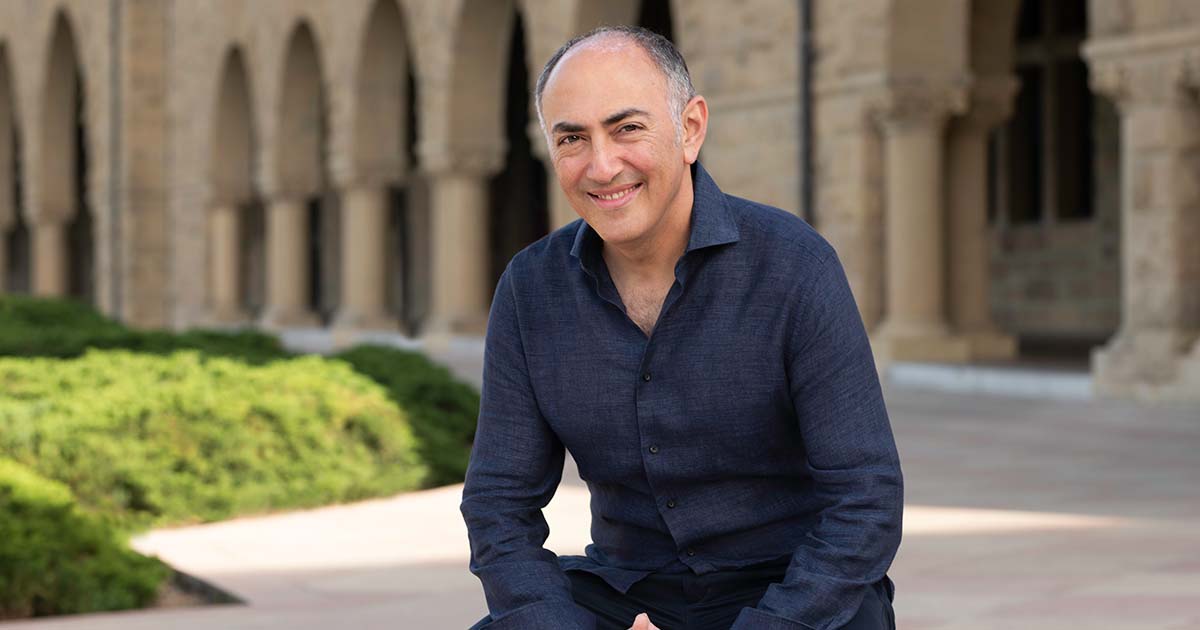Touraj Parang Shows Startups That the Best Path to Success Is to Be Acquired
Touraj Parang started several companies and invested in many others, learning lessons about the secrets of a successful exit that no one talks about.

Why Most Startups Don't End Well
Touraj Parang's new book, “Exit Path: How to Win the Startup End Game,” covers a topic that is taboo among most entrepreneurs and investors. Every founder and venture capitalist wants their startups to either go public or become unicorns with skyrocketing growth, not sold before they achieve their full potential.
The problem with that vision is that 75% of new companies that raise more than $1 million fail to even earn back their investors' money. According to the US Bureau of Labor Statistics, only a third of small businesses survive more than 10 years, and only 30% of those that do are able to be sold. Most owners end their careers by having to close down their companies.
Parang notes that the best way to beat the odds is for startups to be acquired, which is 30 times more likely than going public (in 2020, there were 1,600 initial public offerings and 45,000 acquisitions).
"It's an open secret among Silicon Valley investors and experienced entrepreneurs that acquisitions are the most likely path to success for startups," he told Startup Savant. "I've observed many investors become irritated by any mention of exit strategies, even though they know their own financial success is inextricably linked to a successful sale of a startup."
According to Silicon Valley Bank's recent “Startup Outlook Reports,” a majority of startups consider acquisition to be their "realistic long-term goal," as opposed to an IPO or staying private.
"Few startups take the time to create and execute on an exit strategy because it is a taboo topic among entrepreneurs and their supporters due to misconceptions about it," Parang explained. "While many agree a strategic sale would be the best possible outcome, many founders feel actively pursuing a buyer would be a betrayal of their commitment to fighting to become one of the winners on their own. Others think they may eventually be acquired by a big company, but consider planning for it a distraction until they have created something irresistible that will attract a huge valuation. That's why 70% have made little or no effort to prepare for this."
Investors are also attracted to entrepreneurs who aspire to build scaled companies and have the courage to take massive risks, so talk of doing early planning for an eventual exit sets off alarm bells that founders will be tempted to give up too easily when the going gets hard.
"The problem with this topic is that it is easily misunderstood, so to keep discussions about an exit strategy from going off the rails when you bring this up to your backers, explain that your primary motivation remains building a successful startup, but a Plan B would be to provide what I call strategic optionality," Parang wrote. "Frame it as a parachute to be considered for use in an emergency. The irony is that having an exit strategy will help your team build a stronger and more valuable company that will have much less need to be acquired."
Lessons Learned From a Very Diverse Career
Parang's family moved to the US when he was a high school freshman. At Stanford University as an undergrad, he fell in love with technology and the entrepreneurial culture of Silicon Valley. He earned a BA in economics and philosophy (he credits the latter for helping him to think critically) before graduating from Yale Law school in 1999.
He joined a Palo Alto corporate law firm, represented venture-backed companies from formation to IPOs, and participated in negotiations and due diligence activities for several mergers worth over $100 million. But less than a year in, he felt a strong draw towards the business side and became the first employee at the local office of Earlybird Venture Capital, a German firm, where he focused on tech and life science startups.
In 2003, Parang helped a small family fund, Amidzad Ventures, that seeded early-stage companies transform into a major funder of such success stories as Dropbox and Lending Club. The next year, he was recruited by global legal powerhouse O'Melveny & Myers to expand its Silicon Valley presence, with his focus on a range of services from corporate finance to mergers and acquisitions.
In 2005, he co-founded and became COO of Jaxtr, a pioneer of Voice-over-Internet Protocol (VOIP) mobile technology. It raised $20 million in venture and debt financing, grew to over 50 employees, and won industry awards for innovation. They had been emphasizing growth, not profitability, when the Great Recession hit. Suddenly, their venture debt needed to be repaid, other investors notified them there would be no additional money, and by January 2009, Jaxtr had only six months of cash left.
"As an optimist, I was convinced deep in my heart that we could innovate our way out of this problem," Parang wrote. "All we had to do was shift our focus from growth toward improving our freemium conversion rates and find creative ways to reduce our burn rate … Within a few weeks we even launched a new product we considered a revolutionary step forward for global communications, one that promised to bring free worldwide calling to every mobile phone, even without an internet connection (at the time, less than 25% of the US population had smartphones with broadband connectivity)."
But innovation requires thorough testing, and they didn't have time to get rid of bugs and create a magical user experience that would drive up conversion rates fast enough. They needed a white knight to buy the startup. Parang frantically searched Linkedin to find warm introductions to potential acquirers, but it was too late. The only offer was from an Indian company with which they had explored a potential partnership, which agreed to buy some of Jaxtr's assets.
"The silver lining to all this was the hard lessons learned," he recalled. "When I joined my next startup, Webs, a then popular website-building platform, in December 2009 as vice president of strategy and corporate development, I made it my priority to devise the exit strategy, even though the founding team had no immediate intention of selling...That exercise set in motion a course of events that eventually led to the successful sale of Webs to Vistaprint in December 2011, one of the top acquirers on our wish list."
Following Webs, Parang became involved with several other startups as investor, adviser, and/or founding team member until he joined GoDaddy before its IPO in 2014, serving as an executive on their Corporate Development team until 2021, leading a number of acquisitions and strategic partnerships.
During this period, he also took on a role as an operating advisor at Pear VC, an early-stage fund, which invested in such successes as DoorDash and Gusto. In March 2021, he became President and COO of Serve Robotics, a pioneer in self-driving robotics for delivery, which he helped spin out of Uber and Postmates.
In short, Parang has seen it all. And the biggest mistake he sees startups and their backers make is failing to adequately plan for a strategic sale. Instead, most are not ready when they are in need of a sale or surprised when they receive an acquisition offer, which results in their inability to sell or enter into a deal on terms they could have better negotiated. Instead, he argues that to achieve the best possible outcome, the preparation must start today.
But aren't acquisitions notorious for not working out well for either party? He acknowledges that there is always a lot of news about negative outcomes and our brains tend to remember the big failures. But most acquisitions do not fail. There are good reasons that M&As are at an all-time high worldwide (about 50,000 a year), he argues, and a survey of executives by Deloitte found that a majority considered that more than half of their efforts generated the expected return on investment.
Building Real Relationships
Exit Path includes a very detailed discussion of how to prepare for an offer, starting with a strategic exit plan.
"Regardless of the size of the transaction, for you as the selling entrepreneur and your startup, an acquisition will be a transformational and life-changing experience," Parang wrote. "Your exit may very well change the career or life trajectory for your employees, could delight or frustrate millions of customers, might shift the competitive dynamics of an industry, or perhaps much more. Just as having a business plan is a great way to prepare and create the blueprint for the business activities of your startup, an exit strategy is a great way to prepare and create the blueprint for the strategic activities of your startup."
Based on his extensive experience, Parang recommends planning for an off-site meeting for a couple of days with no more than 10 people who have a diversity of views on everything from its products and services to positioning in the industry and trends. It takes four to six weeks to gather the relevant data, and the meeting itself, he argues, needs to be carefully structured as to how to brainstorm, create the first draft of the strategic plan (it will need to be revised periodically), and do the follow-up.
As it is implemented, the focus should be on creating momentum, moving things forward without requiring an all-out, upfront effort (or just having lofty, long-term goals).
"The best way to gauge your progress is by the incremental steps to strengthen your (a) relationship with potential acquirers, (b) capabilities to act on opportunities, and (c) leverage, which have been the core ingredients of all successful transactions I have been involved with," he wrote. "Attaining these goals will take years of purposeful and persistent effort to create the necessary business connections, cultivate those relationships, and build new organizational muscles."
The book contains 17 chapters and the longest by far is the 35 pages of "Build Relationships," which opens with this comment:
“The most life-changing discovery I have made as an entrepreneur is the realization that meaningful business transactions only happen when the parties actually know and like each other. That is because companies don't do deals, people do. This seemingly trivial detail somehow was never taught or discussed in any of my undergraduate economics courses at Stanford or business and contract law courses at Yale. Prior to this realization, I naively believed that business deals were made when the parties evaluated the pros and cons of the business relationship and then made a purely objective, rational decision when the pros outweighed the cons.”
Parang began noticing how personal relationships influenced business outcomes since they are based on trust, confidence, and credibility. In his book, he provides actionable steps on how to create and nurture relationships with potential strategic partners and acquirers, starting from broad networking to more targeted nurturing of champions within each organization.
If all this sounds like a lot of work, it is, but he speaks from experience about the alternatives. He urges that what is most important today is to start thinking about creating your strategic exit plan, no matter the state or size of your startup and whether you ultimately plan to sell.
About the Author

Scott S. Smith has had over 2,000 articles and interviews published in nearly 200 media, including Los Angeles Magazine, American Airlines’ American Way, and Investor’s Business Daily. His interview subjects have included Bill Gates, Richard Branson, Meg Whitman, Reed Hastings, Howard Schultz, Larry Ellison, Kathy Ireland, and Quincy Jones.
Startup Resources
- Learn more about Startups
- Visit the TRUiC Business Name Generator
- Check out the TRUiC Logo Maker
- Read our Business Formation Services Review
- Find Startup Ideas
- Explore Business Resources
Form Your Startup
Ready to formally establish your startup? Click below to read our review of the best business formation services!
Best Business Formation Services